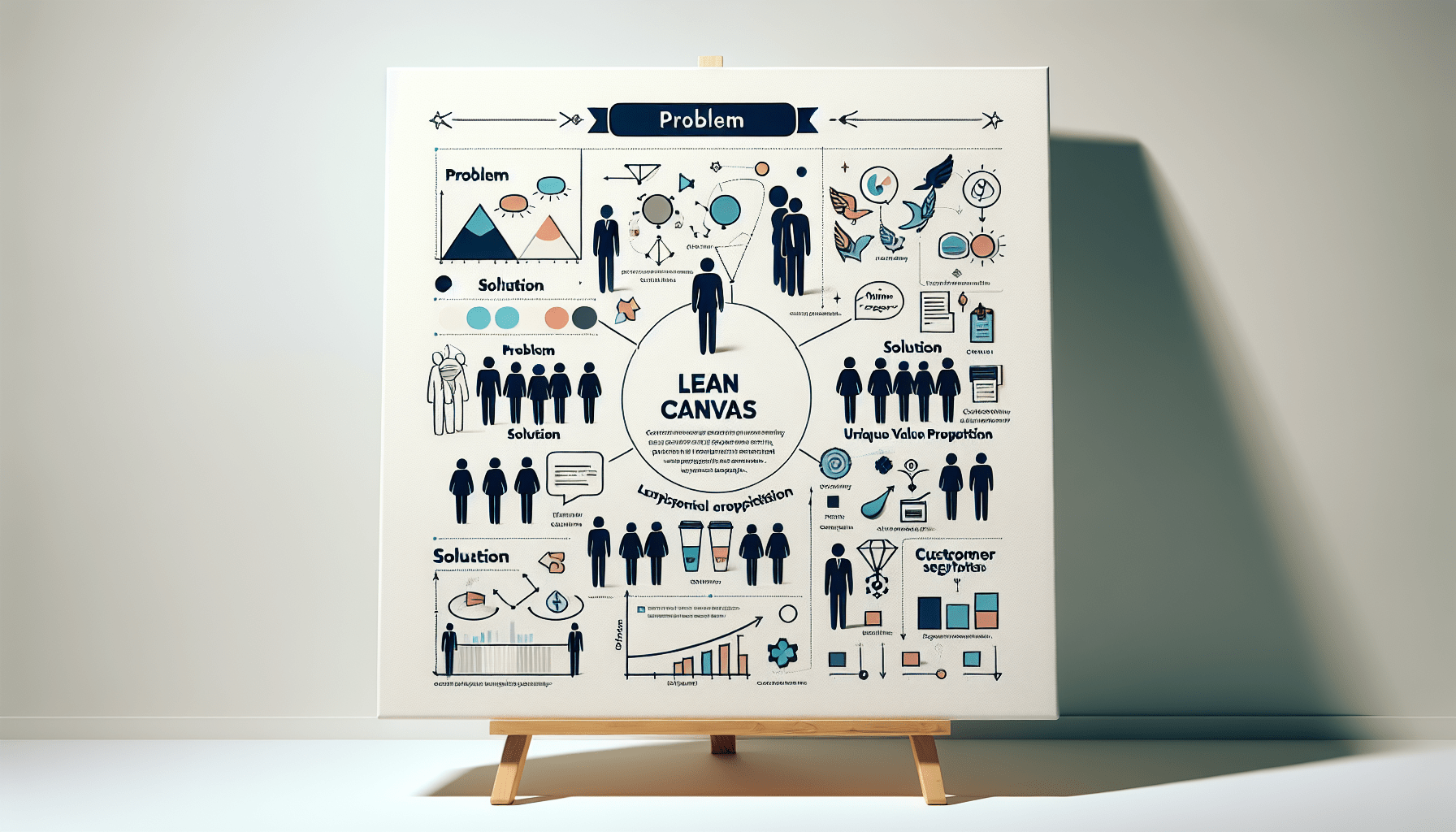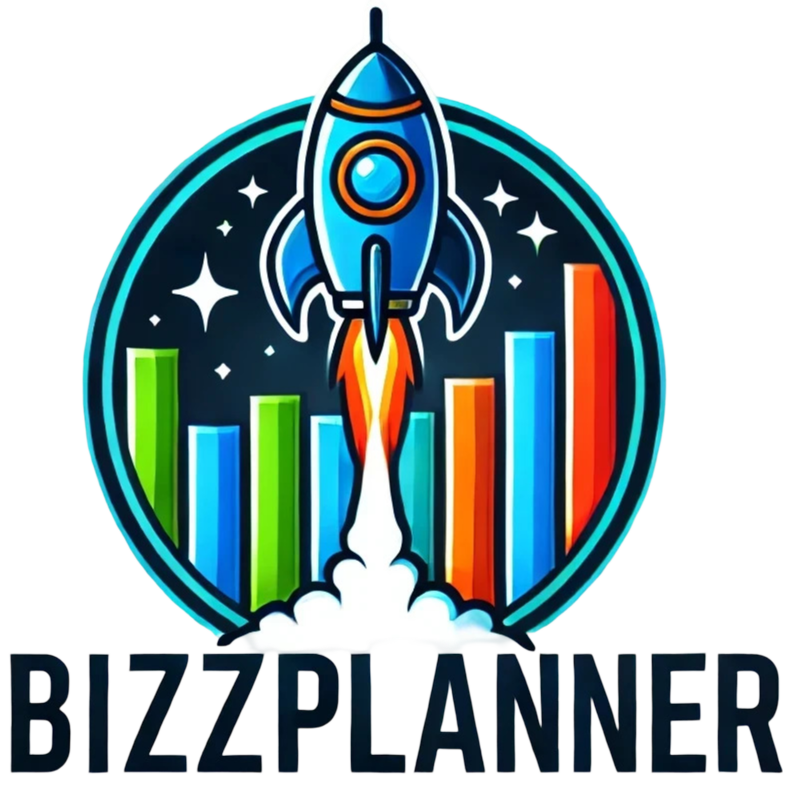Creating a Lean Canvas can feel a bit overwhelming, right? You’re not alone if you’ve found yourself staring at a blank page, wondering how to distill your business idea into a simple framework. It’s like trying to squeeze the ocean into a bottle—where do you even start?
But don’t worry! If you stick around, I’ll guide you through the steps to create a Lean Canvas that’s not only practical but also a powerful tool for your business. By the end, you’ll feel ready to tackle your entrepreneurial journey with clarity and confidence.
We’ll break it down into easy sections, look at some handy tips, and even explore online templates. With a sprinkle of examples to inspire you, you’ll be on your path to success before you know it!
Key Takeaways
Stefan’s Audio Takeaway
- Creating a Lean Canvas takes about 20 minutes and involves filling out nine essential sections.
- Identify your target customers’ top three problems in the Problem section.
- Outline your Solution and develop a Unique Value Proposition to highlight your distinct advantage.
- Be specific about your Customer Segments, Key Metrics, and Channels for reaching customers.
- Detail your Cost Structure and Revenue Streams to map out financial elements effectively.
- Use clear, simple language and keep your entries concise yet impactful.
- Utilize online tools and templates to streamline the creation and collaboration process.
- Consider real examples to better understand how to fill out each section of the Lean Canvas.

1. How to Create a Lean Canvas
Creating a Lean Canvas is a straightforward process that takes about 20 minutes.
First, grab a blank template, which you can find using tools like Miro or simply sketch out on a piece of paper.
Next, fill in each of the nine blocks with concise, clear information about your business idea.
Start with the Problem section, identifying the top three problems your target customers face.
Moving to the Solution block, outline how your product or service addresses these problems.
Don’t forget to craft a Unique Value Proposition that highlights why your solution is the best choice.
As you work through the Customer Segments, be specific about who your customers are.
Key Metrics and Channels identify how you plan to measure success and how you’ll reach your customers.
Lastly, detail the Cost Structure and Revenue Streams to understand your financials.
By the end, you’ll have a clear overview that can guide your next steps.
2. Understand the Sections of a Lean Canvas
The Lean Canvas is divided into nine essential blocks, each serving a specific purpose in your business model.
The first block is the Problem, where you identify the primary issues faced by your customers.
Next comes the Solution, detailing how your business plans to solve these problems.
The Unique Value Proposition highlights what makes your business stand out in the market.
Your Unfair Advantage explains why competitors can’t easily replicate your success.
Customer Segments focus on the specific audience you are targeting.
Key Metrics help you pinpoint how you will measure the success of your efforts.
Channels delve into how you’ll communicate your value to customers.
The Cost Structure summarizes your operational costs, while Revenue Streams outlines how your business will earn money.
Understanding these sections ensures you cover all critical aspects of your business idea.
3. Step-by-Step Process to Develop Your Lean Canvas
Developing your Lean Canvas can be tackled in a few simple steps, making the process efficient and effective.
Start by brainstorming the Problems and jot down your top three priorities.
Next, think about Solutions; how can your offering alleviate these key problems?
Craft your Unique Value Proposition by considering the unique benefits you provide, perhaps comparing it to alternatives.
Evaluate what gives you an Unfair Advantage—do you have unique technology or expertise others don’t?
Identify your Customer Segments, aiming for clarity about their demographics and needs.
Now focus on Key Metrics; define what success looks like and how you’ll track it.
Determine how you’ll reach your audience with Channels that include online and offline methods.
Lastly, detail your Cost Structure and Revenue Streams, making sure you consider both expenses and potential income sources.
Follow this process iteratively, refining each section as you gain new insights.

4. Tips for an Effective Lean Canvas
To make your Lean Canvas truly effective, you should keep your entries brief but impactful.
Use clear, simple language; avoid jargon that might confuse others.
Each section should directly address the needs of your customers and the unique solution you offer.
Don’t worry about getting it perfect on your first try; view it as a living document that evolves with your project.
Remember, the canvas is designed for quick iterations, so don’t shy away from seeking feedback from mentors or peers.
Avoid clutter by focusing only on the most vital details—it’s all about clarity!
Lastly, keep it visual; using colors or diagrams can enhance understanding and recall.
5. Utilize Online Tools and Templates for Your Lean Canvas
Creating a Lean Canvas has never been easier, thanks to the variety of online tools available.
Web platforms like Miro offer user-friendly templates where you can collaborate with your team in real-time.
Alternatively, you can use digital whiteboard tools like iObeya for a more interactive experience.
For those who prefer a more traditional approach, there are PDF templates you can print out and fill in by hand.
Using these tools can save you time and focus more on the content rather than the formatting.
Many of these platforms also allow for easy adjustments as your ideas shift, supporting that iterative process.
6. Learn from an Example of a Lean Canvas
Seeing an example can clarify how to effectively fill out a Lean Canvas.
Consider a startup that’s developing an app to improve meal planning.
In the Problem section, they identify issues like lack of time for grocery shopping and meal planning.
The Solution could include personalized meal plans and grocery delivery.
For Unique Value Proposition, they might emphasize convenience and customization.
Unfair Advantage could be an exclusive partnership with local grocery stores.
Customer Segments would include busy professionals and health-conscious families.
In Key Metrics, they might track user engagement and customer satisfaction ratings.
Channels could involve social media marketing and collaborations with food blogs.
Cost Structure may include app development and marketing expenses, while Revenue Streams could focus on subscription fees.
This example showcases how each block combines into a coherent overview that can guide strategic decisions.
7. Conclusion on Creating a Lean Canvas
Creating a Lean Canvas is an excellent way to clarify your business idea and shape your strategy.
With just around 20 minutes, you can outline a clear path forward.
Remember, it’s important to revisit your canvas regularly as your understanding of the market deepens.
By approaching each section thoughtfully, you can uncover valuable insights and ensure that your business remains aligned with customer needs.
The iterative nature of the Lean Canvas encourages flexibility, which is crucial in today’s dynamic market.
Utilize the tools and templates available to simplify the process and involve your team in the conversation.
Ultimately, the goal is to understand your customers better and position your business for success.
FAQs
A Lean Canvas is a one-page business model framework that helps entrepreneurs outline their startup’s vision, identify key assumptions, and clarify their value proposition, making it easier to communicate their business idea succinctly.
To create a Lean Canvas, start by identifying your customer segments, problem, and unique value proposition. Then, fill in sections like channels, revenue streams, cost structure, key metrics, and unfair advantage to complete the model.
The key sections of a Lean Canvas include customer segments, problem, unique value proposition, solution, channels, revenue streams, cost structure, key metrics, and unfair advantage. Each section focuses on critical aspects of your business strategy.
Yes, there are several online tools and templates available for creating a Lean Canvas, including platforms like Canvanizer, LeanStack, and Miro. These tools offer interactive features to help visualize and strategize your business model effectively.
